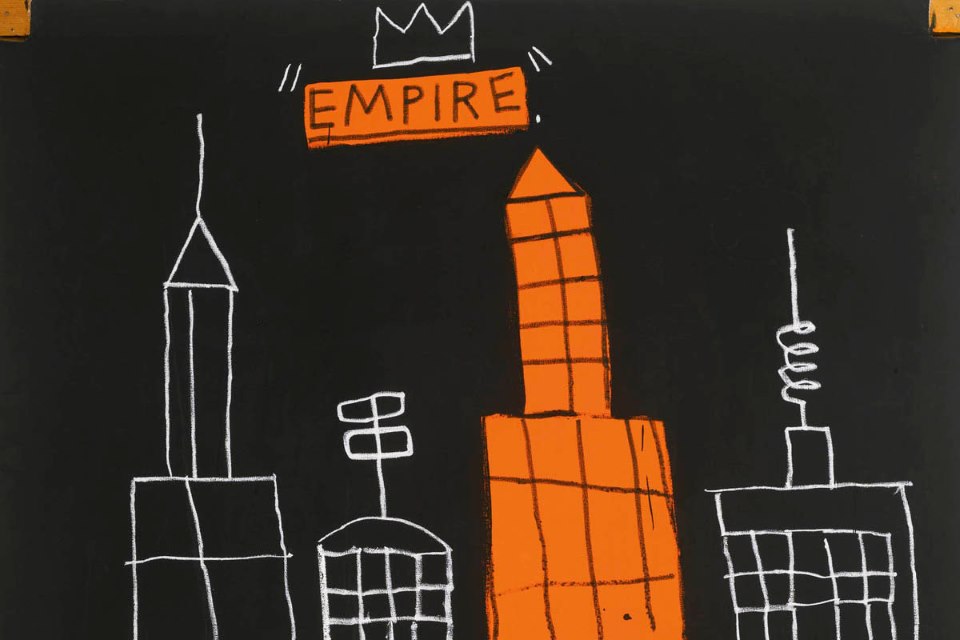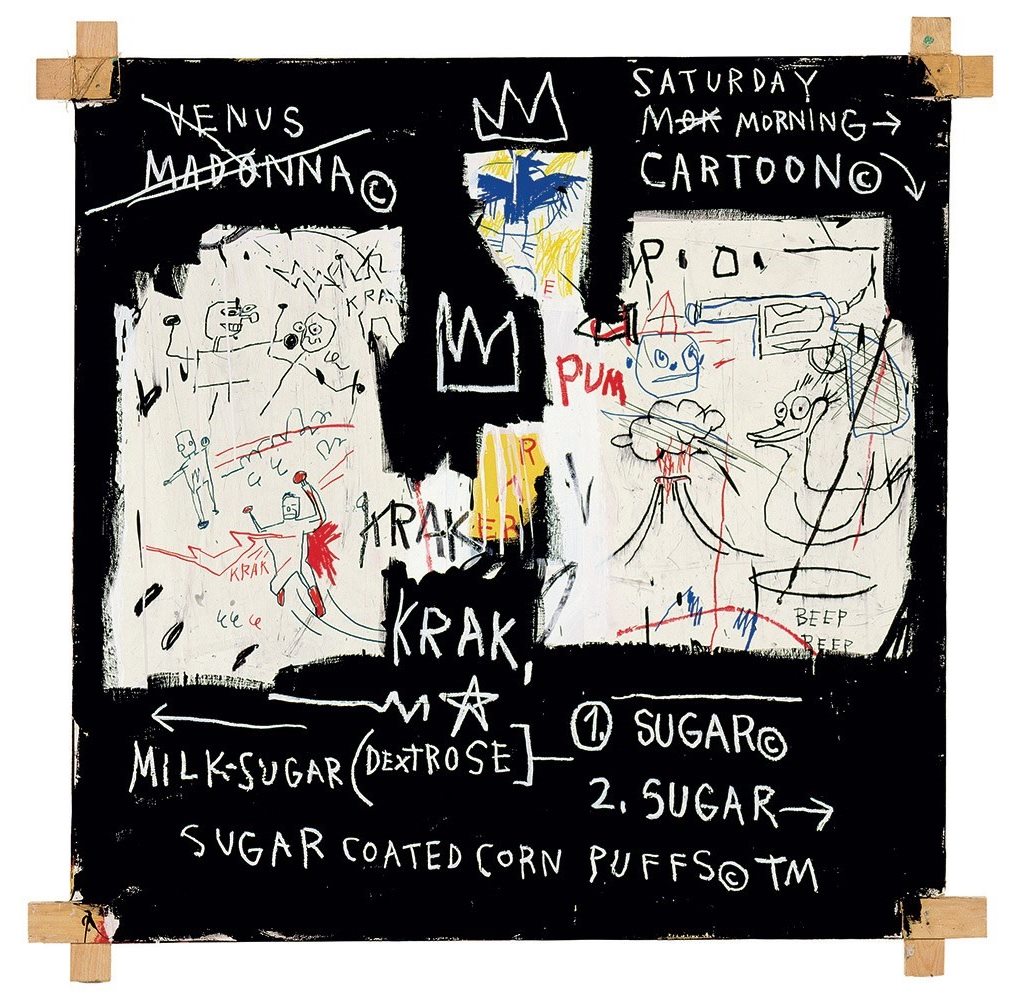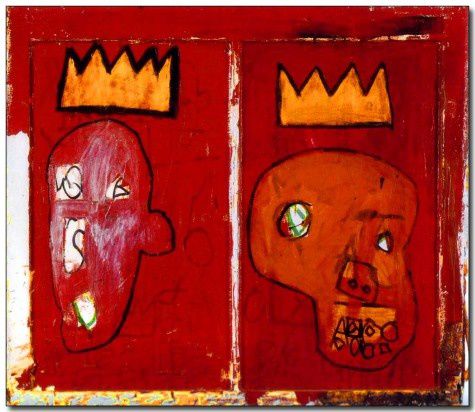Born to a father of Haitian origin and a mother of Puerto Rican origin, Jean-Michel Basquiat has used the symbol of the crown on numerous occasions in his art. Let's discover together what is the meaning of what has become his emblem, his signature.

The origin of the name Basquiat
To better understand why Basquiat used the crown as a signature, it is interesting to know the origin of the name Basquiat. The origin of the family name Basquiat is more complex than we can imagine and can shed light on the famous signature crown of the American artist.
To find information on this family, we must consult a French book published for the first time in 1903 : Le Dictionnaire des Familles françaises anciennes ou notables à la fin du XIXème siècle by Gustave Chaix d'Est-Ange.

Source : livre.fnac.com
This book refers to the Basquiat family, which would have belonged to the French nobility in the current department of the Landes in France. Also, the author indicates that there was another branch of this family in the Spanish Basque Country. This branch would have died out in 1586.
Let's take an interest in the branch established in the Landes, the "de Basquiat", members of the French high nobility: Jean de Basquiat in the 16th century was a squire, he lived in the town of Saint-Sever. Louis XIV maintained the qualification of nobility for this family, his successor Louis XV also validated it, but later it was debated. Indeed, a certain Mathieu de Basquiat born in 1724 in Saint-Sever had been the subject of a genealogy report.
Then, we find Bernard de Basquiat known as Baron de Toulouzette and musketeer of the king's guard in the 18th century. The last one we find in this genealogy is: Alexis de Basquiat, King's adviser, deputy of the third state of the seneschal of Dax at the general states in 1789.
This name would have been transmitted during slavery
It is quite likely that members of the "de Basquiat" family went into exile at the time of the French Revolution. The latter probably chose land of slavery and would have lost their particle which was already a thorny issue in the past.

Details of Mecca by Jean-Michel Basquiat, 1982
The Basquiat would then have given their name to slaves who belonged to them or whom they knew. This transmission of the name may have come from there, although we cannot be sure. This family name and its evolution thus allows us to make the link between nobility and the obsessive use of the crown in the work of Basquiat.
Read also: The 10 most beautiful quotes by Jean-Michel Basquiat
Basquiat would have used the crown to pay homage to his family roots
Basquiat used this crown from his early days as a graffiti artist on the streets of New York. With his friend Al Diaz, he put the word "SAMO" (Same old shit) on the city walls.

A panel of experts, Jean-Michel Basquiat, 1982
Basquiat dropped out of high school at the age of 17 to devote himself to art and a bohemian life where one lives from day to day. He cut ties with his close family, but remained in direct contact with his roots. He used this crown perhaps out of pretension, but it is more likely that he used it knowing the French and noble origin of his name. He also spoke French admirably well.
A painting that symbolizes Basquiat's love for the crown
A work that refers to the crown without the mention SAMO is particularly interesting. This painting is called Red Kings, it was painted in 1981 on a window, in the manner of a diptych.

Red Kings, Jean-Michel Basquiat, 1981
Basquiat was able to produce a work on any support that came to hand: helmets, walls, doors, refrigerators, heaters, televisions...
Red Kings measures 81 x 93.5 cm. With this diptych creation, Basquiat shows that he had a good knowledge of art history. With this painting, he is interested in the past, the kings of France and the origin of his name.
His search for information about his roots is perpetual, like a personal battle against a family who did not want to tell him more or who simply had no information to communicate to him about the origin of this enigmatic name.
In addition, Basquiat shows that he is very fond of the symbol of the king. He never hid it, he wants to be the king of his discipline, the figure on the left on this painting represents Basquiat himself, we can see the letters: "BSQ" on both eyes and nose.
Through this masterpiece, we can clearly perceive Jean-Michel Basquiat's desire to set himself up as a king and to represent himself as such at the age of 21. A strong ambition that never left him during his short but prolific career as an artist.




